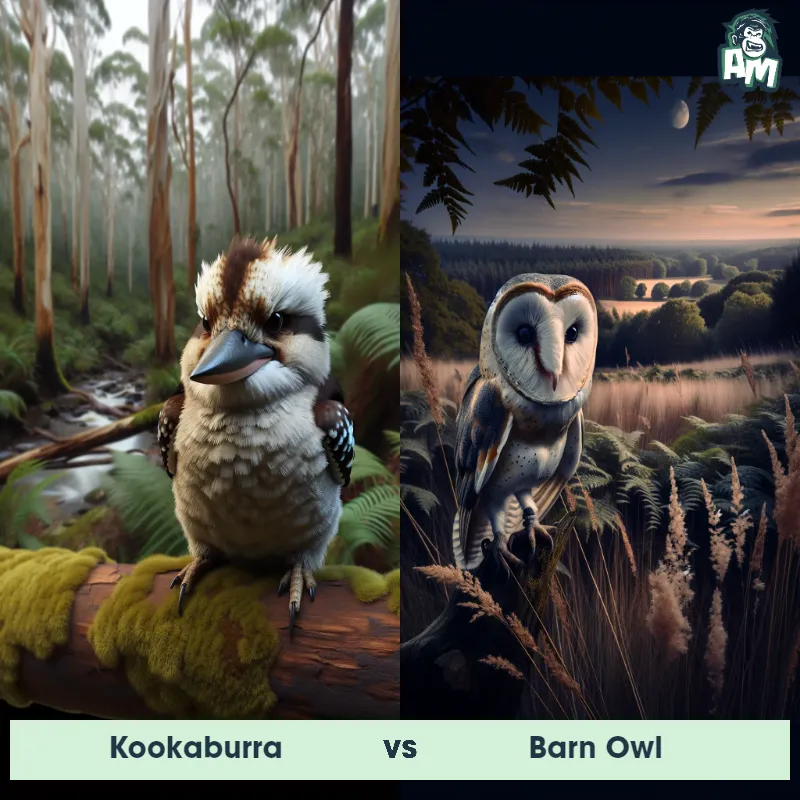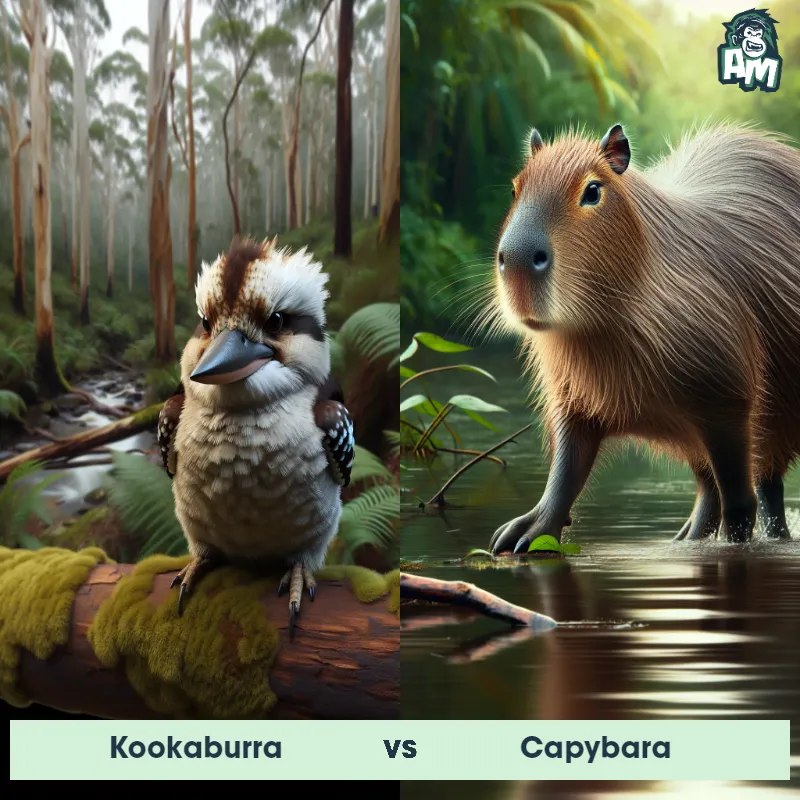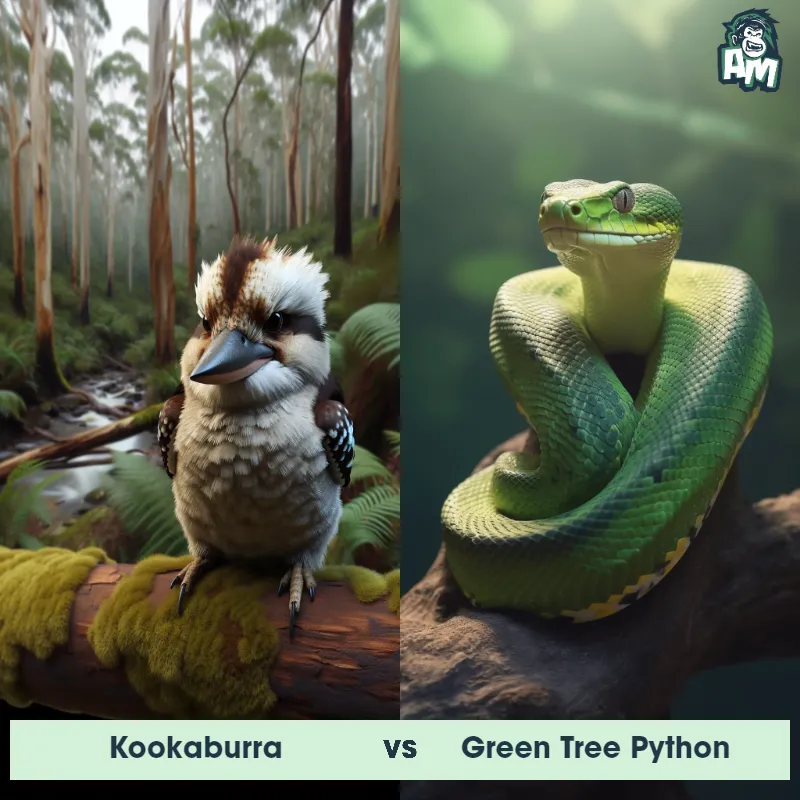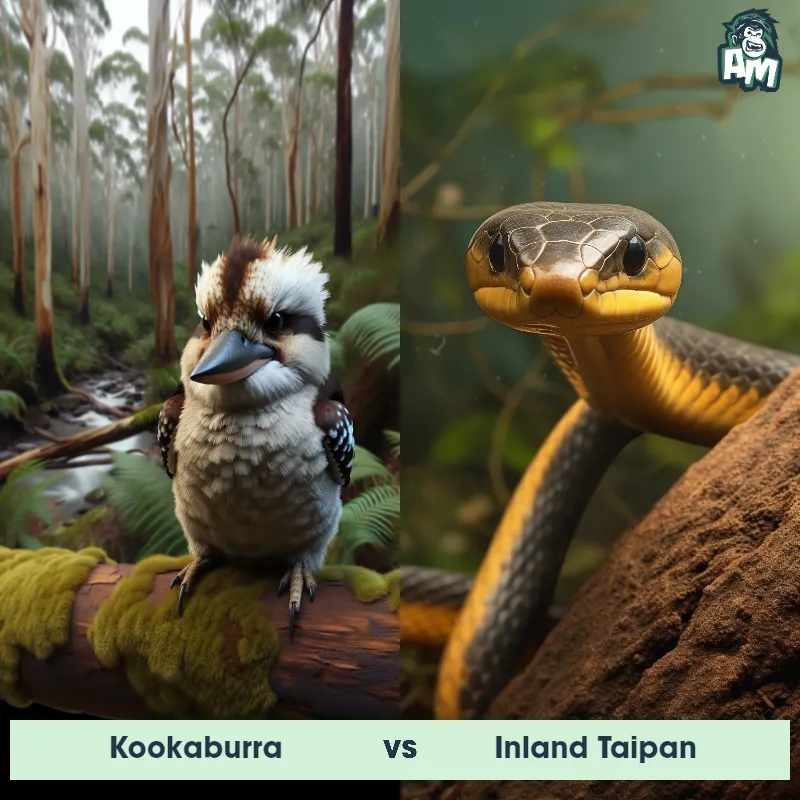The Kookaburra
The Kookaburra, also known as the Laughing Kookaburra, is a large and distinctive bird native to Australia. It is known for its unique call, which sounds like a hearty laugh. With its stocky build and large head, the Kookaburra has a brownish-white plumage on its upper body and wings, while its head is mostly white with a dark eye stripe. It has a sturdy beak that is perfectly designed for capturing and devouring its prey, which predominantly consists of insects, reptiles, small mammals, and even other birds.

| Kookaburra | |
|---|---|
| Size | 18-20 inches (46-51 cm) |
| Weight | 11-17 ounces (320-480 grams) |
| Speed | 30mph (48km/h) |
| Key Strength | Agile flight and strong beak |
| Biggest Weakness | Limited defense against larger predators |
| Scientific Name | Dacelo novaeguineae |
| Family | Alcedinidae |
| Habitat | Forests, woodlands, and suburban areas |
| Geography | Native to Australia |
| Diet | Carnivorous, feeding on insects, small reptiles, mammals, and birds |
| Lifespan | 10 years - 15 years |

The Kookaburra
The Kookaburra, also known as the Laughing Kookaburra, is a large and distinctive bird native to Australia. It is known for its unique call, which sounds like a hearty laugh. With its stocky build and large head, the Kookaburra has a brownish-white plumage on its upper body and wings, while its head is mostly white with a dark eye stripe. It has a sturdy beak that is perfectly designed for capturing and devouring its prey, which predominantly consists of insects, reptiles, small mammals, and even other birds.
Fun Fact: The Kookaburra is not only known for its resemblance to a laughing sound, but it has also been given the nickname "Bushman's Clock" because its call often coincides with the start and end of the day in the Australian bush.
| Kookaburra | |
|---|---|
| Size | 18-20 inches (46-51 cm) |
| Weight | 11-17 ounces (320-480 grams) |
| Speed | 30mph (48km/h) |
| Key Strength | Agile flight and strong beak |
| Biggest Weakness | Limited defense against larger predators |
| Scientific Name | Dacelo novaeguineae |
| Family | Alcedinidae |
| Habitat | Forests, woodlands, and suburban areas |
| Geography | Native to Australia |
| Diet | Carnivorous, feeding on insects, small reptiles, mammals, and birds |
| Lifespan | 10 years - 15 years |
Kookaburra Matchups
We use AI to simulate matchups between the Kookaburra and other animals. Our simulation considers size, strength, and natural predatory behaviors to determine the most likely outcome.
Kookaburra: Diet, Predators, Aggression, and Defensive Behaviors
What do Kookaburras eat?
Kookaburras primarily feed on insects, worms, and small reptiles. Kookaburra are also known to eat small birds, rodents, and even snakes. Additionally, Kookaburra have been observed scavenging for food in picnic areas and campgrounds.
Do Kookaburras have any predators?
Despite their loud call and large size, Kookaburras do have predators in their natural habitat. Some of their main predators include large birds of prey, such as eagles and owls, as well as snakes and feral cats.
Are Kookaburras aggressive?
Kookaburras are not known for being aggressive towards humans, but Kookaburra can exhibit aggressive behavior towards other birds and animals, especially when defending their territory or food source. Kookaburra have been observed engaging in territorial fights with other birds of the same species.
Do Kookaburras fight?
Kookaburras are territorial birds and will engage in fights with other members of their species to establish dominance and defend their territory. These fights can sometimes be physical, with birds using their sharp beaks and strong talons to fend off rivals.
How do Kookaburras defend themselves?
Kookaburras have several defense mechanisms to protect themselves from potential threats. Kookaburra have a sharp beak and strong claws that Kookaburra can use to defend themselves against predators. Additionally, their loud and distinctive call can serve as a warning signal to other Kookaburras in the area.
What is the biggest weakness of Kookaburras in a fight?
Despite their sharp beak and agile movements, Kookaburras can be vulnerable to larger predators, such as eagles or raptors, which have the advantage in terms of size and strength. In a fight against a larger predator, a Kookaburra may struggle to defend itself effectively.
Fun Fact: Kookaburras are known for being territorial birds and live in family groups, called "kookaburra clans," consisting of a breeding pair and their offspring from a few breeding seasons.
Fun Fact: Kookaburras have a unique feeding behavior where they will snatch their prey from the ground or even grab it mid-air before returning to their perch, where they will beat it against the branch to kill and tenderize it before consuming it.
















